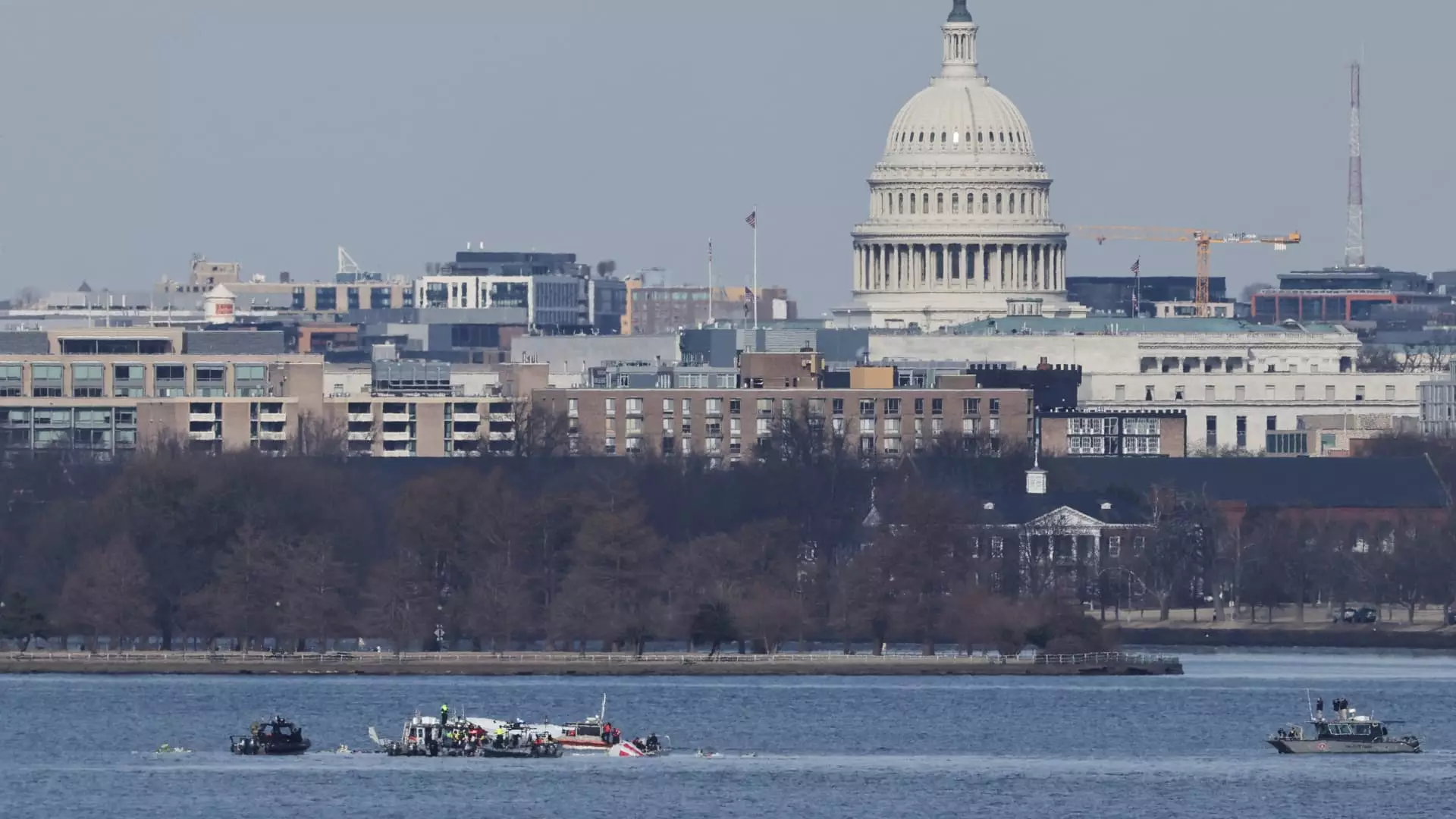The horrific collision between a Black Hawk helicopter and an American Airlines jetliner over the Potomac River on Wednesday night has left the nation grappling with both grief and a pressing need for clarity. This tragic incident, which claimed the lives of all 67 individuals aboard both aircraft, is not only the deadliest aviation disaster in the U.S. since 2001 but also raises critical questions regarding air traffic management and safety protocols.
The American Airlines flight, designated as Flight 5342, was making its final approach to Reagan National Airport at an altitude of approximately 300 feet when it collided with the Black Hawk helicopter. This occurred just before 9 p.m. ET, resulting in a catastrophic explosion that devastated both aircraft and the surrounding area. Emergency responders reported that 41 bodies have been recovered thus far, with identification efforts underway for the deceased.
As investigators continue their work, a complete analysis of flight data and cockpit voice recordings from Flight 5342 and the helicopter is ongoing. The National Transportation Safety Board (NTSB) has taken the lead in this investigation, recognizing the need for meticulous data verification before reaching any conclusions. As they comb through the wreckage and analyze the flight records, the fundamental question remains: how did this incident transpire?
The airspace surrounding Washington, D.C., is notoriously complex and congested. Military helicopters frequently transit this area, following specific regulations set by the Federal Aviation Administration (FAA). According to these regulations, helicopters are generally required to maintain an altitude below 200 feet while operating near sensitive sites, including military bases and the Pentagon. Given that the Black Hawk was reportedly engaged in an annual proficiency training flight, adherence to these protocols is crucial.
However, statements from both Defense Secretary Pete Hegseth and President Trump have raised concerns about the helicopter’s altitude at the time of the accident. Both officials suggested that the helicopter may have been operating too high, potentially contributing to the tragic collision. While these claims are noteworthy, it is essential to remember that all theories must be substantiated by concrete evidence before drawing definitive conclusions.
In the aftermath of the crash, Reagan National Airport has faced substantial operational disruptions. With two of its three runways closed due to their proximity to the crash site, hundreds of flights have been canceled, stranding passengers and necessitating emergency logistical responses. The airport’s management indicated that runway closures could persist for about a week, complicating travel plans in an already congested airspace.
Safety experts emphasize that the crash has highlighted more than just immediate concerns related to individual flights. John Cox, a retired pilot and aviation safety consultant, pointed out that focus on the flight path during approach can shift rapidly, leading to oversights in altitude awareness. In this case, enhanced communication and coordination between air traffic controllers and pilots will play a pivotal role in enhancing safety going forward.
The ramifications of this accident extend beyond immediate operational concerns, casting a spotlight on the overall state of aviation safety in the United States. Remarkably, the country had not witnessed a fatal commercial aviation accident since 2009. Such a lengthy period of safety had led to an expectation of consistently rigorous standards. However, persistent issues regarding staff shortages and the potential overextension of air traffic controllers have led to some questioning the robustness of safety regulations.
As lawmakers and regulators consider the factors that may have contributed to this tragedy, they will likely evaluate air traffic staffing practices. A preliminary FAA report indicated that the staffing at Reagan National that evening was not typical, raising concerns over whether critical roles, including those responsible for monitoring helicopter operations, were adequately filled.
While it remains too early in the investigation to draw definitive conclusions regarding the causes of this tragic collision, it is clear that many questions remain unanswered. The investigation led by the NTSB will be vigilant in its pursuit of the truth, collecting and verifying evidence before announcing findings. It is incumbent upon regulatory agencies, aviation leaders, and policymakers to reflect on this devastating event and reassess current practices to prevent such a calamity from happening in the future.
As the country mourns the profound loss of life, a recommitment to aviation safety, training, and operational rigor is paramount—ensuring that a tragedy of this nature does not repeat in years to come.

